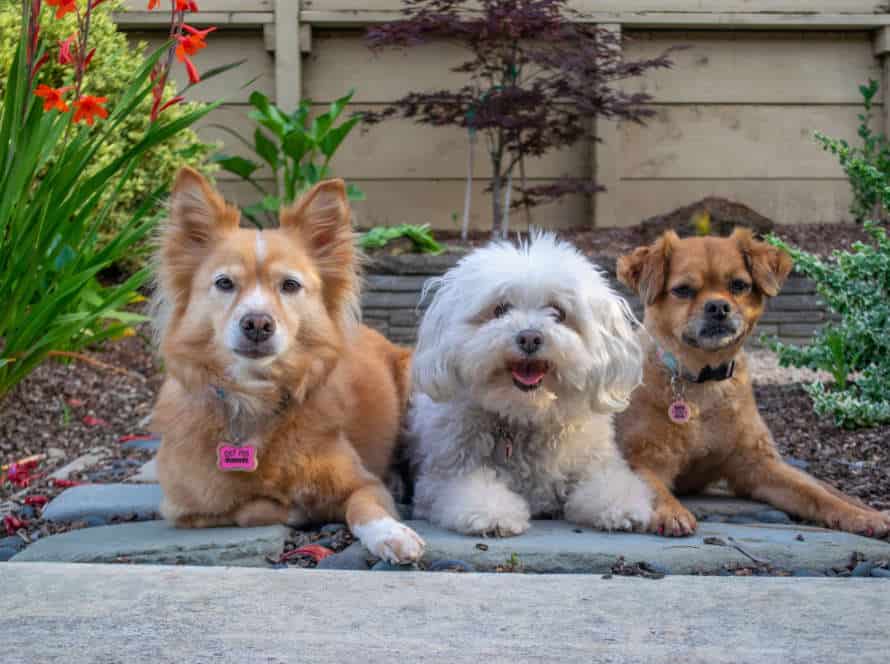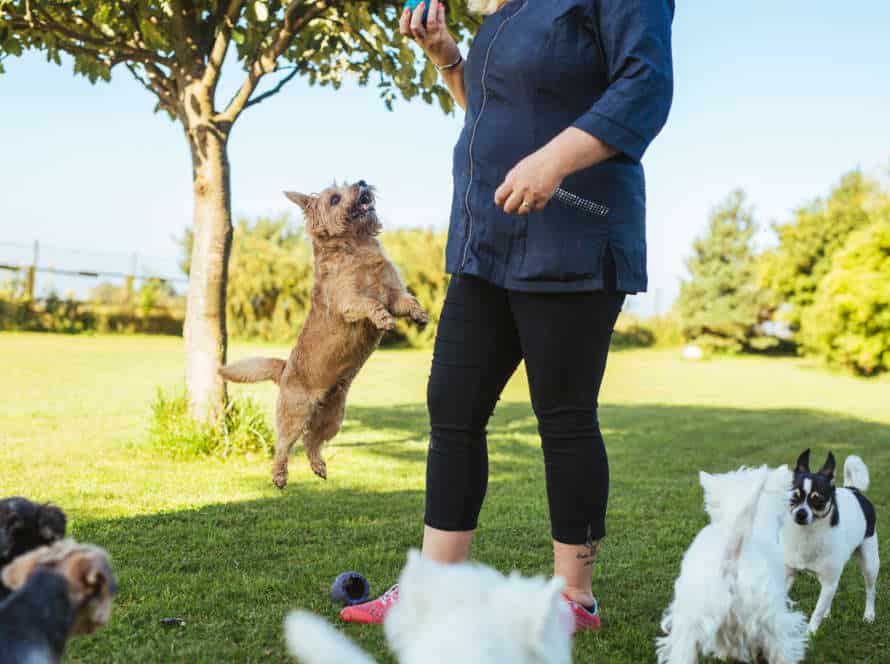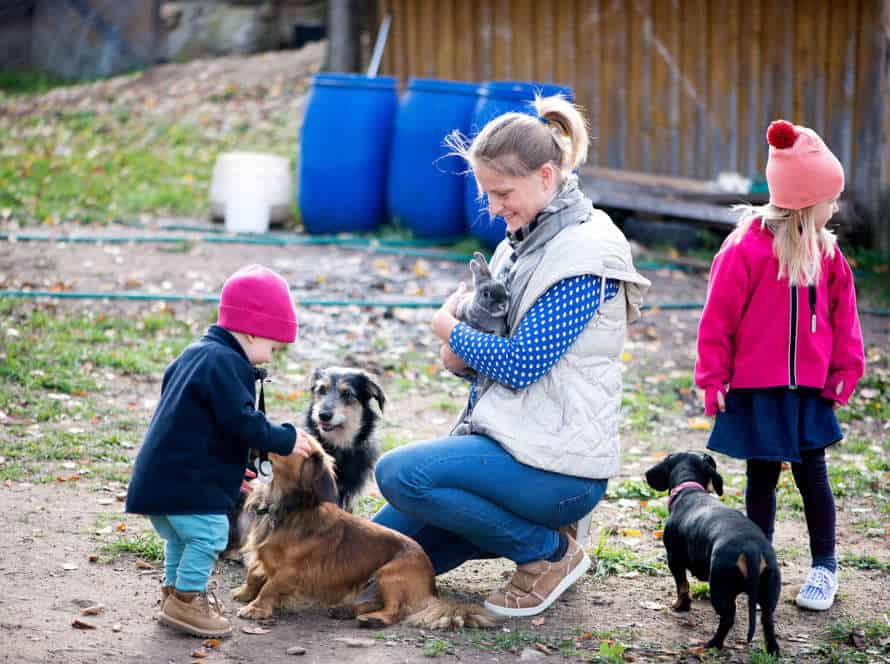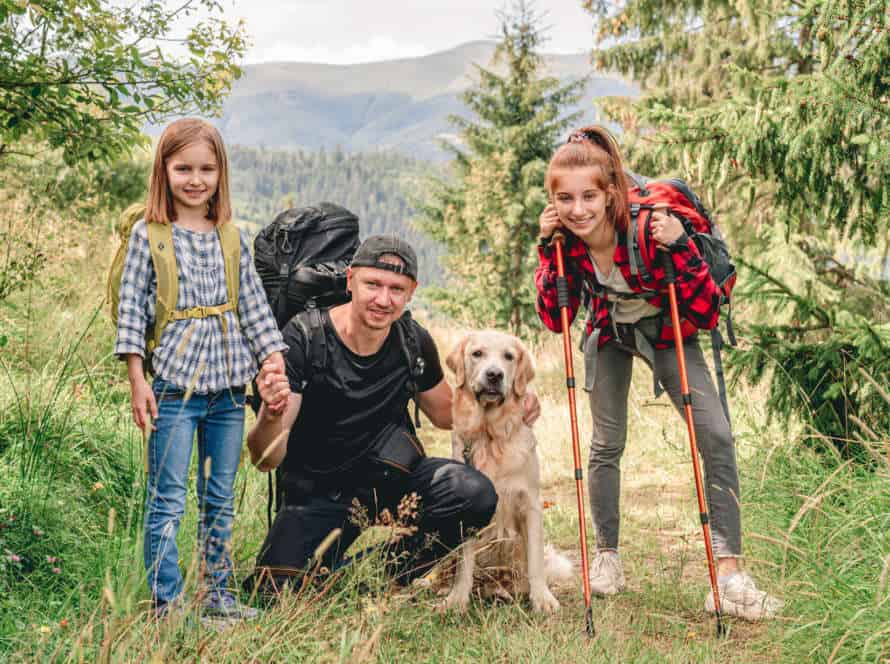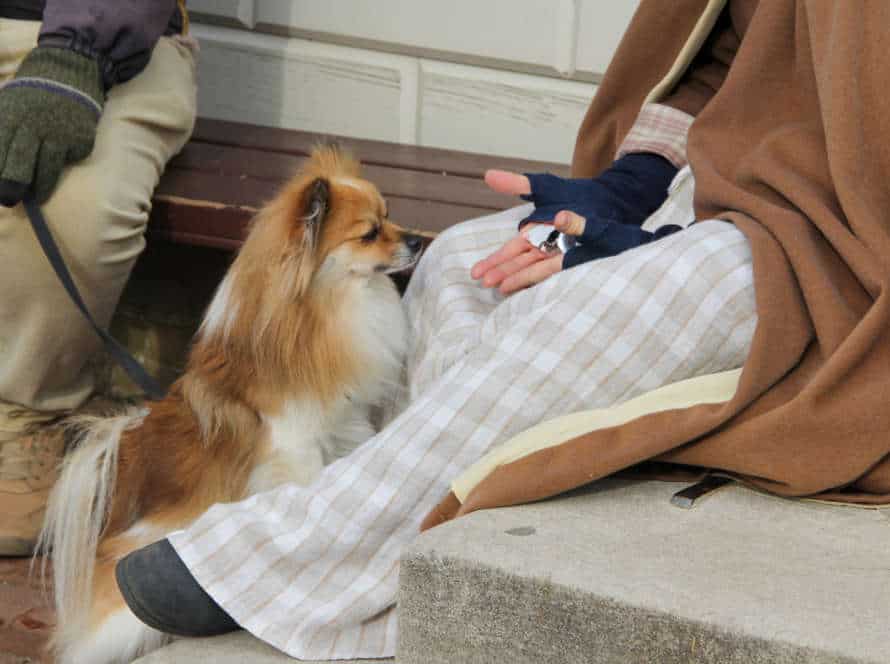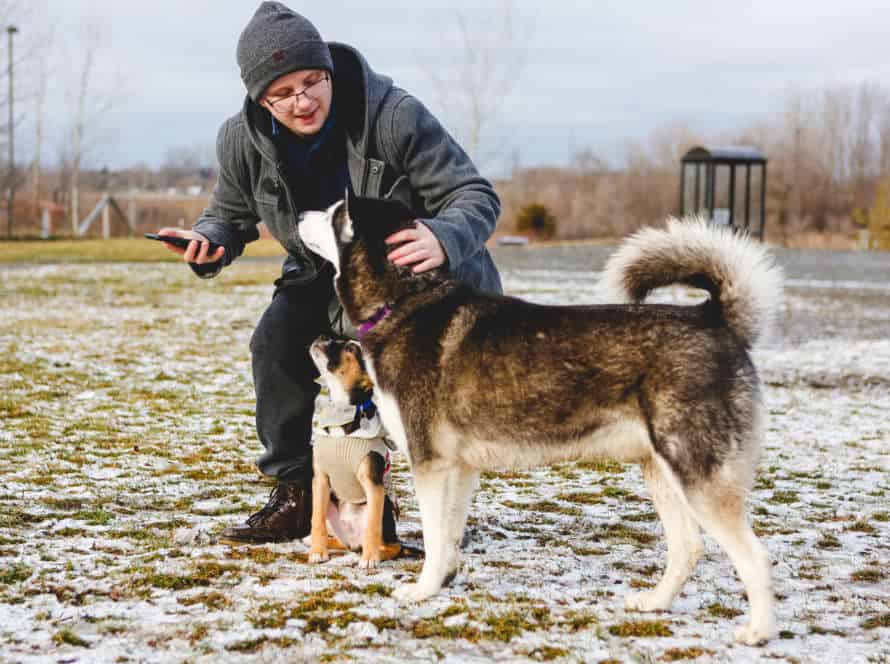Fostering Positive Dog-Human Bonds at Any Age
Creating a strong bond between you and your pup is vital for a content and healthy relationship. You can accomplish this at any age, if your pup is brand new or has been around for years. Here’s some advice to aid in forming a positive bond:
- Gain Trust: Establishing trust is the root of any relationship. Spend quality time with your pup, comprehend their requirements, and recognize their limits.
- Connect Properly: Dogs communicate by body language and vocal signals. Learn to observe and respond to their feelings and body language and use positive reinforcement to support great behavior.
- Keep Consistent: Constancy is key for fostering a good dog-human bond. Stick to a plan for feeding, exercising, and teaching, and constantly use the same commands and orders.
- Have Fun: Playtime is essential for any pup, it’s a great way to bond. Find activities both you and your pup enjoy, like going for a walk, fetch, or teaching them new tricks.
Pro Tip: Remember that bonding with your pup needs time, patience, and dedication. But the returns are priceless, and the bond you make with your pup will bring you joy and friendship for years.
Understanding Your Dog’s Body Language
Understand your dog’s body language for a successful relationship! Every pooch communicates differently, and their body language can inform what they’re feeling and thinking. Knowing their body language is a must if you want a strong bond with your pup. Here, let’s discuss the importance of recognizing your pup’s body language and how it can help your relationship.
Understanding your dog’s facial expressions
Getting to know your pup’s facial expressions is key to understanding their emotions and forming a strong bond with them. A dog’s face can show us what they are feeling, thinking, and planning. Let’s take a look at some common expressions and what they mean:
- Ears perk up or point forward: Alertness, interest, curiosity.
- Ears flat against the head: Fear, unease, anxiety.
- Mouth closed, face relaxed: Calm, contentment.
- Mouth open, panting: Hot, anxious, or excited.
- Tense muscles, wrinkled forehead: Aggression, fear, or threat.
Observing your dog’s face can help you react properly, meet their needs, and strengthen the connection between you two.
Understanding your dog’s body posture
Grasping your pup’s body language and knowing what it conveys, can aid in bettering the link between you and your pooch!
Check out a few of these body postures and what they mean:
- Tail wagging – This may imply different things depending on speed and direction. A slow wag with the tail down shows anxiety, while a fast wag with the tail up is sign of enthusiasm.
- Ears – Notice the position of the ears, as they indicate your pup’s watchfulness. If they’re pointing up and attentive, the pup is alert. If they’re flattened against the head, it reveals fear or aggression.
- Eye Contact – Direct eye contact demonstrates the pup is paying attention, while averting eye contact is an indication of submission or fear.
Realizing these body postures can enable you to converse better with your dog and create a firmer bond based on mutual trust and respect.
Understanding your dog’s vocalizations
Dogs communicate with us and other dogs via vocalizations. Knowing what these sounds mean can benefit pet owners. It will help to create a positive relationship and a happy life for the pup and its owner.
- Growling: This is a warning sign. The dog is feeling threatened or uneasy. Step back and give it space.
- Whining: This can mean the pooch wants attention or is anxious. Find out why they are whining to help soothe them.
- Barking: Barking could be due to fear, excitement, or aggression. Analyze the situation to know how to react.
- Howling: Howling is a way to talk to other dogs or their owners. But too much howling might suggest distress.
Building Trust with Your Dog
Gain trust with your pup to form a strong bond! It takes time to build trust, but once achieved, it’s a long-term relationship. Try these tips:
- Show respect.
- Consistency.
- Positive reinforcement.
- Quality time.
- Exercise.
Developing a routine
Developing a routine is essential for forming strong dog-human relationships at any age. Routine, structure, and consistency give dogs trust and self-assurance.
Creating a routine could involve:
- Giving food and water at the same time every day.
- Designating regular exercise times and activities.
- Setting times for teaching and play.
- Keeping a stable sleep timetable.
Tip: Think about your pup’s age, breed, and character when making the routine. This will guarantee it fits their needs. Having a routine can make your pup feel safer and give them structure, which leads to a healthy and cheerful life.
Positive reinforcement training
Positive reinforcement training is an awesome way to create a bond between you and your pup! Here are some tips to help:
- Treats, praise and toys are great for rewarding good behaviour and reinforcing positive actions.
- Focus on your pup’s strengths and help them build on their natural talents.
- Set clear boundaries and expectations, and remain consistent in your training.
- Use playtime and exercise to increase bonding, and give your pup a fun outlet for their energy.
- Show respect and empathy, and avoid punishment and negative reinforcement.
Creating a trusting, positive relationship takes time and patience. With practice and dedication, you can have a long-lasting bond with your furry friend!
Encouraging frequent socialization
Socializing often is essential to build trust with your pup and create a great bond between you two at any age. Here are some tips to promote socialization:
- Introduce your pup to varied people, animals, and places from a young age.
- Go to dog-friendly activities, like dog parks, shows, or obedience classes.
- Reward desirable behavior during socialization with treats and compliments.
- Be patient and consistent in your training and socializing attempts.
- Provide your pup with plenty of exercise and mental stimulation to make them feel safe in various social scenarios.
Remember, socializing isn’t a one-time thing but an ongoing process. Include it in your pup’s everyday routine. By following these hints, you can help your pup gain trust and self-assurance, and form a positive and long-lasting relationship.
Communication Techniques for Positive Dog-Human Interactions
Creating a good bond between people and dogs is essential for a healthy relationship. This can be hard, especially with older dogs who may have had bad experiences in the past. But don’t worry! With some patience and the right communication techniques, dog owners can help build a positive relationship with their pup. Let’s look at some of these techniques now.
Active listening techniques
Active listening is a great way for dog owners to form better connections with their four-legged pals. Here are some tips to become a pro listener:
- Give your pup your undivided attention. Put away distractions when you talk to them.
- Notice nonverbal cues. Pay attention to body language, facial expressions, and tail movements.
- Use verbal cues. Say “yes,” “I understand,” and “go on” to show you’re listening.
- Paraphrase what they said. Doing this shows you understand them and helps them feel heard.
With active listening, you can make better relationships with your dog and upgrade your communication skills. Bonus tip: Practice active listening when you have walks and bonding time with your pooch!
Using positive body language cues
Positive body language is essential for good dog-human relations. Here are some tips:
- Keep an open posture and stand up straight. Don’t cross your arms.
- Talk in a calm, kind voice and show pleasant facial expressions.
- Make eye contact, but don’t stare – it can be seen as a threat.
- Pet and stroke your dog’s body to show affection.
- Pay attention to their body language to understand them better.
These techniques will help you build trust and respect with your pup, which are really important for a strong, positive bond.
Building a reliable way of communicating
Communication is essential to build a strong relationship between humans and dogs. Here are some tips:
- Talk to your pup in a clear, consistent voice.
- Use body language and expressions to show what you mean.
- Instead of punishing, use positive reinforcement for good behaviour.
- Play and exercise with your dog often.
- Notice your pup’s body language and sounds to understand their feelings and needs.
By following these tips, you can have a fulfilling bond with your furry friend, regardless of their age.
Problem Solving Techniques for Dogs and Their Owners
Understand your pup’s behavior! It’s key for a strong bond. Teach them to react to certain situations. Learn how your behavior can influence theirs. Here we’ll discuss problem-solving techs to foster positive relationships with your pet, no matter their age.
Addressing behavioral problems
To fix behavioral issues in dogs, you need patience, persistence, and a desire to make a good human-dog bond. Here are some techniques for any age dog and their owners:
- Positive Reinforcement training; treats, praise, and rewards for good behavior and not for bad.
- Make sure you follow commands and rules consistently.
- Expose your pup to different environments and people from an early age.
- Give your pup enough exercise and mental stimulation to avoid bad behavior.
- If problems persist, seek professional help from a certified trainer, behaviorist, or vet.
It takes effort and patience to address dog behavior, but the right techniques can create a great relationship with your furry pal!
De-escalating conflict situations
Decreasing conflicts between dogs and their owners needs patience, understanding and a willingness to communicate. Here are some methods for creating strong dog-human bonds:
- Train your dog with positive reinforcement on commands like “sit” and “stay.”
- No physical punishment or shouting as they increase stress and anxiety.
- Read your dog’s body language and respond. If they show fear or aggression, give them space and calm them down with gentle tones and body language.
- Set rules such as where the dog is allowed in the house and follow them.
- If the dog’s behavior is dangerous, get help from a professional.
By using these techniques, you can have a good and long-lasting relationship with your furry companion.
Developing resolutions that work for dogs and their owners
Developing resolutions to foster strong and healthy dog-human bonds is paramount to success. Here are some techniques to do so:
- Communicate effectively – Dogs can’t talk, but use their body language to express their needs. Pay attention and respond appropriately.
- Set clear expectations – Establishing boundaries and routines is a must for a happy, trained pup. Be consistent with your expectations.
- Be patient and persistent – Training and problem-solving take time and effort. Celebrate small successes and remain consistent.
- Reward good behavior – Positive reinforcement is a powerful tool. Reward your pup for obedience and new tricks.
By using these methods, owners and dogs can develop resolutions that benefit both parties, resulting in a strong bond. Pro-tip: Training and dedication are necessary for a happy and healthy relationship.
Other Strategies for Enhancing Dog-Human Bonds
Constructing a strong bond between your pup and family members can be a beneficial experience. Luckily, there are heaps of approaches to create a solid, dependable relationship between dogs and humans. For example:
- Positive reinforcement
- Giving structure and regularity
- Encouraging communication
We’ll look at a few of these tactics in more detail.
Encouraging playtime
Promoting playtime is a fantastic way to strengthen the bond between a dog and its owner. A few tips to make playtime enjoyable:
- Use reward-based teaching to educate your dog on new tricks and games.
- Organize regular playdates with other dogs for socializing and exercise.
- Employ a range of toys and activities, such as fetch, tug-of-war and hide-and-seek.
- Make playtime part of your everyday agenda with a few minutes of play daily.
Remember, positive playtime helps build an incredible connection between dog and owner. Pro tip: Observe your canine’s body language during playtime to make sure they are having fun and avoid over-stimulation or fatigue.
Spending quality time together
Quality time together is a great way to bond with your pup. Here are some other methods to strengthen your connection:
- Exercise each day. This helps release energy and reduce stress.
- Training. Teach your doggo new things and build trust through communication.
- Playtime! Fetch or tug-of-war are fun ways to bond.
- Grooming. Brushing and bathing give physical touch and affection.
- Positive Reinforcement. Treats or praise for good behavior.
Remember: building a strong bond takes time and patience. Be consistent, and always prioritize positive reinforcement and play!
Staying consistent with interactions and training.
Consistency is key for a great relationship between dog and human. Sticking to the same interactions and training can help owners and their furry companions build a strong bond at any age.
Try these tips:
- Set a routine and stick to it. Dogs love when things are predictable. Establish a feeding, exercising, and playing timetable, and stay as close to it as possible.
- Positive reinforcement works best. Give rewards or compliments for good behavior. This encourages dogs to repeat the good behavior and creates trust.
- Train regularly. Consistent practice of basic commands like ‘sit’, ‘stay’, and ‘come’ is necessary for all ages of dogs. As your pup improves, try more advanced tricks.
- Show physical affection. Petting, cuddling, and belly rubs make dogs very happy. Make sure to include some loving touches in your day-to-day routine to increase the bond.
Frequently Asked Questions
Q: How can I foster a positive bond with my dog?
A: You can foster a positive bond with your dog by spending quality time with them, training and playing with them, and showing them love and affection.
Q: Can I foster a positive bond with an older dog?
A: Yes, older dogs can still form positive bonds with humans. Be patient with them and give them plenty of love and attention.
Q: What should I do if my dog is aggressive?
A: If your dog is displaying aggressive behavior, seek the help of a professional dog trainer or behaviorist. They can help you to address the underlying issue and train your dog to behave in a more positive manner.
Q: How can I train my dog to be more obedient?
A: You can train your dog to be more obedient by using positive reinforcement techniques, such as praise and treats, and being consistent in your training approach.
Q: How often should I play with my dog?
A: You should aim to play with your dog for at least 30 minutes each day. This can include games such as fetch, tug-of-war, or hide-and-seek.
Q: Can children help to foster positive bonds with dogs?
A: Yes, children can help to foster positive bonds with dogs, but they should always be supervised by an adult when interacting with a dog to ensure that both the child and the dog are safe.


